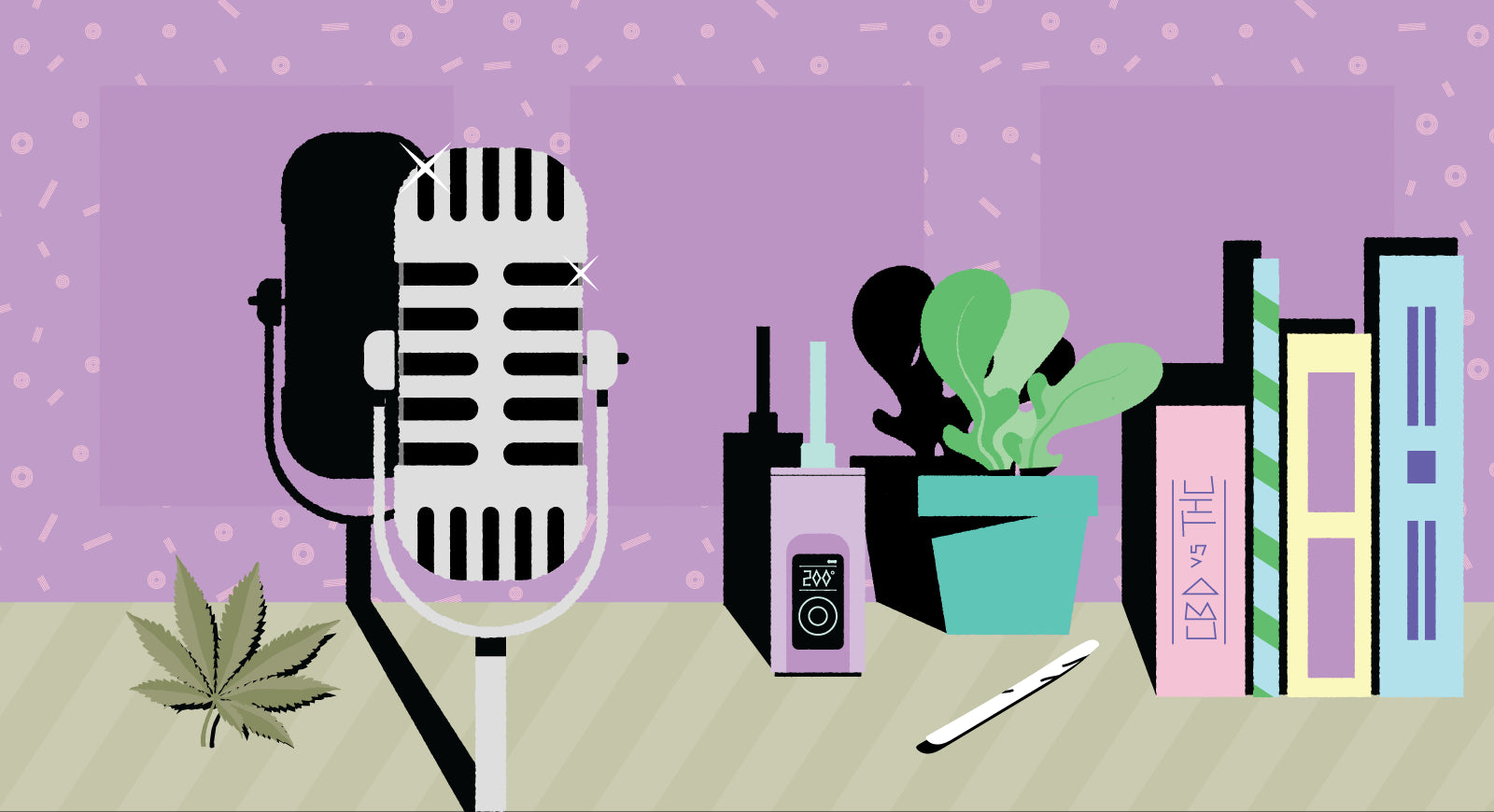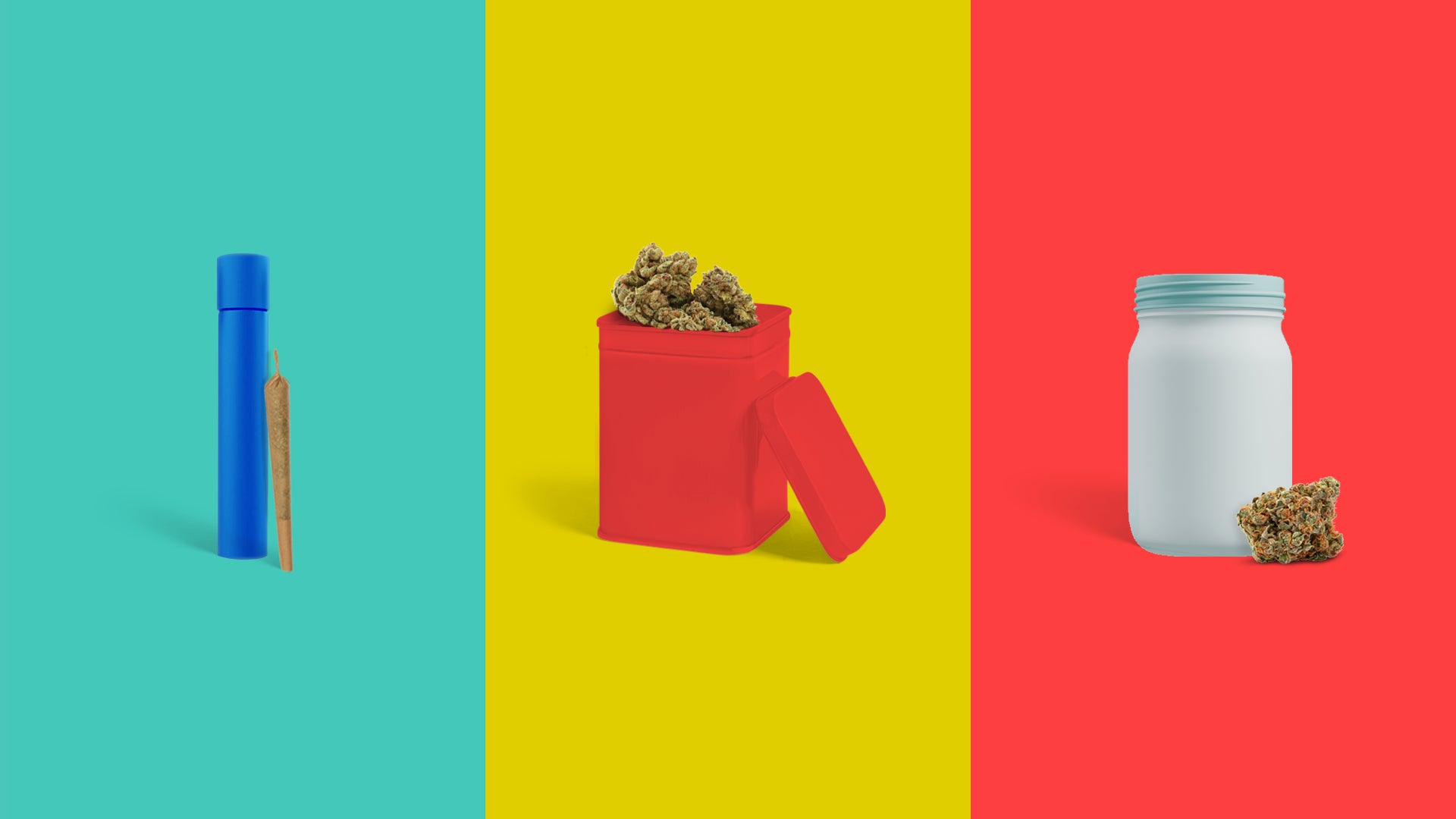Can you believe it’s been a whole year since cannabis legalization in Canada? Sometimes it feels like only yesterday... Since October 2018, you’ve probably learned a lot about cannabis, but that doesn’t mean there isn’t some mystery still surrounding the landscape as a whole.
You sent us a lot of questions over the last year, and we started to notice a trend. These are some of the most popular questions we’re asked on a regular basis, and now you’re going to have the answers. Teamwork makes the dreamwork, right?
1. There’s a lot of packaging that comes with my cannabis. Does that just go in the garbage?
We’d be ignoring the obvious if we didn’t acknowledge that cannabis packaging is a little excessive. There are lots of rules around packaging requirements, and we’re doing what we can to help minimize its impact on the environment. The Tweed | TerraCycle Cannabis Packaging Recycling Program takes your packaging and gives it a second life. The plastic is melted down into tiny pellets and then used to create new products. Did you know that 90% of the environmental impact for the average product comes from actually extracting and refining the raw materials needed to make it? By recycling your cannabis packaging, you can help reduce the overall impact on the environment.
Oh, and just as a little fun fact: we recently reached a milestone of 1,000,000 pieces of cannabis packaging recycled. Pretty cool, right? You can do your part by dropping your cannabis packaging in a designated Tweed | TerraCycle bin. Don’t worry, we’ll take care of the rest.
2. I want to grow my own cannabis at home. How do I do that?
As part of the whole legalization thing, certain provinces allow you to grow your own cannabis plants at home. Doing so can be a little tedious, but that doesn’t mean it can't be done. First off, you’ll need seeds. Then you’ll need the following:
- Water
- Paper towels
- Plates
- Flower pot(s)
- Airy soil
- Spray bottle
- Lamp
Now, the entire process is a little lengthy, so let’s try and run through it quickly.
Note: Seed germination is not guaranteed
- Dampen the paper towel with distilled water, put it on a plate, and place the seed on top. Take another damp paper towel and put it on top of the seed. Cover your paper towels with a second plate, creating a little oyster shell for your seed to live in.
- Keep the plate in a warm location (generally between 21oC and 26oC). Oh, and keep that paper towel moist, people.
- In 1 to 3 days, your seed should split open with a tiny sprout. Do NOT touch it. Seriously. Don’t.
- Fill a 2-inch pot with some airy soil, and poke a hole in the middle. Very carefully use tweezers and transfer your sprouted seed to the pot, then cover it with soil.
- Keep the soil moist using a spray bottle, but don’t overwater it. Your seedling needs 18 hours of light and 6 hours of darkness to grow properly. A lamp with a timer is going to be your new BFF.
- Once your plant starts growing leaves (and growing in general), you’ll have to re-pot it to make sure it can properly absorb energy and water.
- Your plant is going to start developing stronger roots and branches, which means it’s time to gradually increase the light intensity, sticking to a target temperature range of 22oC to 24oC. The plant will grow a lot faster now, which means it’s going to need more water and nutrients. Try and keep it pruned and defoliated, too. Your plant can stay in the vegetative state until it’s at your desired height and strength.
- Once you want to send your plant to the flowering stage, change the light cycle to 12 hours of light and 12 hours of darkness. Oh, and leave the plant alone. Don’t touch it, don’t move it, just let it do its thing.
- You’ll notice that your plant’s flowers become dense and covered in dark orange or red pistils and milky trichomes—this means it’s ready.
- Hooray, you grew your own cannabis plant.
Whew. Running is hard. Maybe next time we’ll just power walk through it.
3. What does it mean when my cannabis says “indica” or “sativa”?
Alright, this is a tricky one. Historically, the terms “indica” and “sativa” referred to where cannabis plants originated from. Indica referred to plants that were “originating from India,” and sativa referred to plants that were ground on the Western Continent.1
In general, you’ll find these terms are used as a way of describing the effects of certain cannabis strains. For example, some people find the effects of indica strains more sedating or physical in nature. As for sativa strains, some people find that the effects are more cerebral or energizing. When you see the terms indica and sativa on cannabis packaging, this is probably what it’s referring to. However, it really all depends on who you are as a person. Everyone reacts differently to each strain, so it’s always best to start low and go slow.
We wrote an article about it if you'd like to learn more
4. What’s the difference between cannabis CBD and hemp CBD?
In short: nothing. Molecularly speaking (whoa that sounds fancy), CBD derived from hemp and CBD derived from cannabis is the same. Hemp and cannabis both come from the same family, Cannabis sativa, so any CBD that’s cultivated from them will be genetically identical.
But, and there’s always a but, you need to be careful. Even though the genetic makeup of these two CBD types are the same, it doesn’t mean all CBD products will be. If you’re not buying CBD products from legal or regulated sources, there’s a chance that your CBD could be contaminated with harsh fertilizers or chemicals.
5. What are terpenes and why do they matter?
This question stinks...or rather, it has a nice aroma. Terpenes are these tiny little molecules that are in basically every living plant, not just cannabis. They play a huge role in the flavours and aromas of each cannabis strain. There’s a unique combination of terpenes in every strain, and while you may not be able to identify the individual tastes or smells, you can bet they’re working hard to give you a pleasant cannabis experience. Oh, and if you’re looking for the actual terpenes, you can find them in the trichomes of the cannabis plant. Well...you can’t actually see them because they’re microscopic, but take comfort in knowing they’re there.
6. What’s the difference between THC and CBD?
Considering they’re the two most well-known and studied cannabinoids, it’s always good to know the difference between THC and CBD.
THC is the active compound that causes the intoxicating effects of cannabis, or what makes you feel “high.” The more THC in a product, the more intoxicated you’ll feel. THC can also cause effects like drowsiness, anxiety, and an impaired ability to remember, concentrate, or react quickly.
On the other side of things, CBD isn’t intoxicating, although it does still have an effect on your brain. Since CBD doesn’t bind well to the CB1 or CB2 receptors in your body, it doesn’t intoxicate you the way that THC does. In fact, CBD can act as a buffer against the effects of THC as long as they’re consumed together, like in a 1:1 strain.
Science is cool.
7. Is smoking the only way to consume cannabis?
Well if it is, then we’ve wasted a lot of time on other products. Smoking cannabis is arguably the most popular way to consume cannabis, but it’s definitely not the only way.
Another way of consuming cannabis is through vapourizing, or vaping. The active compounds are turned into vapour (hence the name) for you to inhale. Vaping cannabis may minimize your exposure to combustion by-products since you’re not actually burning the cannabis. Put that in the ‘win’ column.
There’s also the option to ingest your cannabis. There are oils, softgels, and homemade edibles that can all be ingested and digested. Your body metabolizes the active ingredients through the liver and gut, and then they enter the bloodstream.
Depending on how you consume your cannabis, the onset and duration of the effects will vary. Check it out.
Vaping or smoking
Onset: within seconds or minutes
Duration: up to 6 hours
Ingesting
Onset of effects: 30 minutes to 2 hours
Duration of effects: up to 12 hours
(NOTE: Some effects from consuming cannabis can last up to 24 hours, regardless of format.)
8. How do I add cannabis to a recipe to make my own edibles?
Great question. You can’t just chop up a bud and throw it into your cookie dough like it’s flour. Well, technically you could—but it wouldn’t go over well. Cannabis needs to be decarboxylated before it becomes active, and this process occurs when cannabis is heated. Another thing to keep in mind is that cannabinoids are fat-soluble, so you need to introduce them into your recipe using things like oil and butter. Conveniently, we have recipes for cannabutter or cannabis-infused oil ready and waiting for you. Once you’ve got that down, we have other recipes to use them in if you want to take a gander. Who doesn’t love a good gander?
9. What are the different formats of cannabis I can buy?
You pose an interesting question. As of right now, there are three major forms of legal cannabis: dried flower, oil, and softgels (or capsules) available for you to purchase.
Dried Flower
Bud, or dried flower, is cannabis in its most natural form. There’s nothing added. It is what it is.
Dried flower can be rolled into a joint or milled for use in vapes, which is probably why it’s so popular. Versatility is key.
Oil
Cannabis oil doesn’t come from wringing out the leaves like a wet towel (but how cool would that be?). Instead, using food-grade carrier oil, cannabis resin is diluted to create a ready-to-consume product. Decarboxylation has already happened, so you can use cannabis oil in your cooking or ingest it orally straight from the bottle.
Softgels
If you’re looking for a more convenient way to consume, and really who isn’t, then softgels are for you. Softgels turn that fancy cannabis oil we just talked about into a capsule, giving you a precise amount every time. There’s no smell, you don’t need any accessories, and they fit in your pocket. What else could you ask for?
10. When will vapes/edibles/beverages be legal in Canada?
See, this is why your last question was so interesting. Even though right now there are only three main formats for sale, things like vapes, beverages, and edibles will become legal in the coming months thanks to the next round of legal regulations. It’s a little something we like to call legalization 2.0. As always, Tweed has you covered when it comes to these new products, so keep your eye out for all the innovations coming out and make sure you don’t miss it.
What we’ve learned.
The cannabis world is constantly changing, and it can be difficult to keep up. But if you stick with us, we’ll do whatever we can to help you figure it out.
1. Pollio A. The Name of Cannabis: A Short Guide for Nonbotanists. Cannabis



